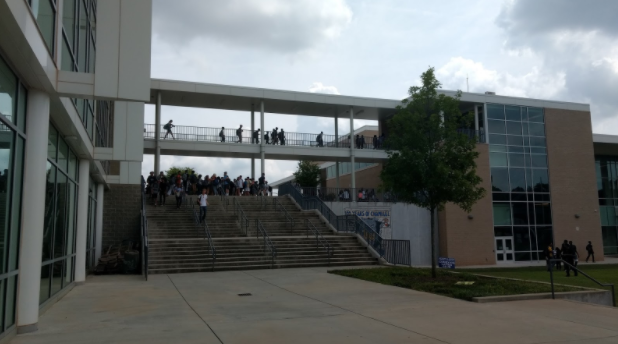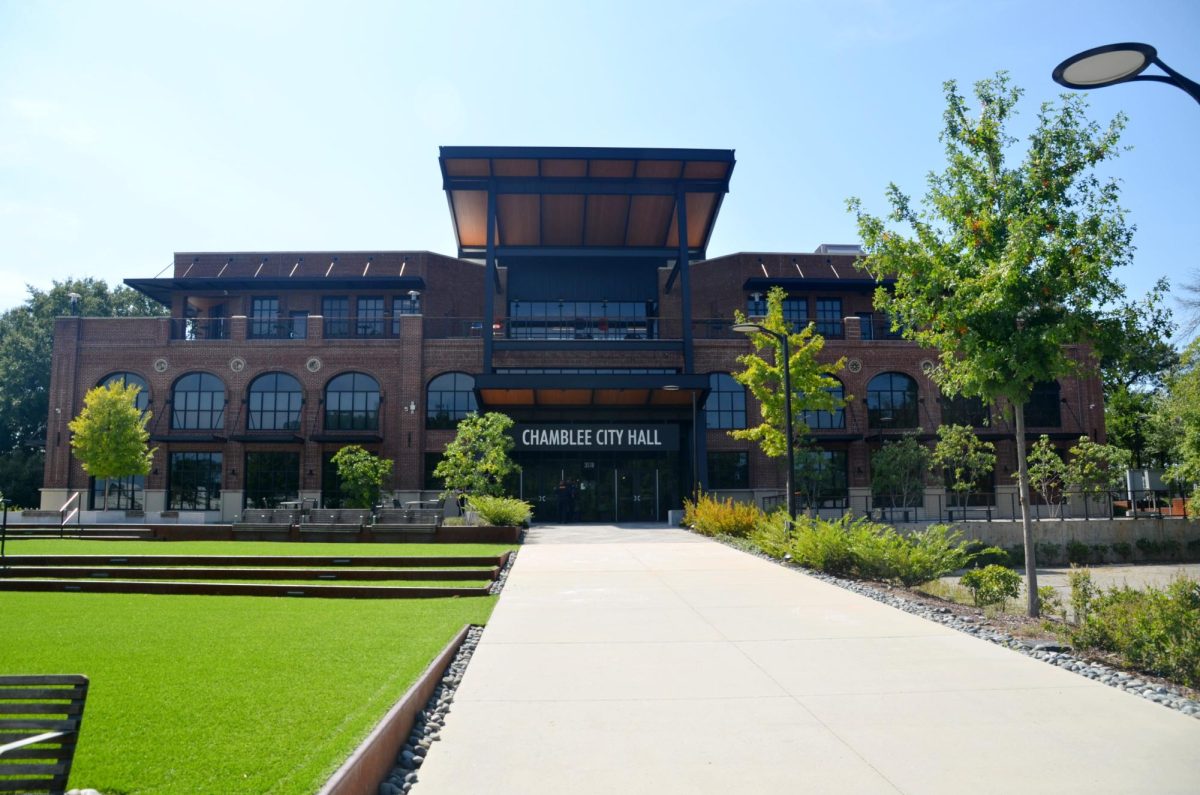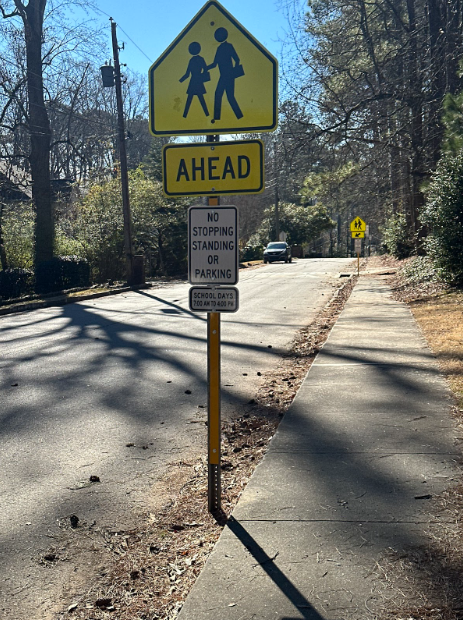Going to your locker, talking to friends, and using the bathroom in a five minute class change is enough of a challenge for all high schoolers.
So when students could use only the skybridge to enter the arts building during the week of August 14th, it caused quite an outcry among students. The change was rescinded the following week.
Many students were angered by the rule because it forced them to have to re-think their class change routes. The fastest way for some to reach the skybridge was to use the already overcrowded main staircase.
Sophomore Sophia Sparks had a bad experience on that staircase.
“It was the same day as the skybridge thing happened and the stairwell was really chaotic and I think I was going upstairs and it was crazy and somebody ran into me, so I fell,” said Sparks.
Not only was the new policy hazardous for students, but it made it much harder for them to get to class on time.
“I had to go from the second floor [of the academic building] just to the first floor of the arts building, but I had to go from the second floor [of the academic building] to the third floor and all the way back [down] which was just completely ridiculous,” said sophomore Grace Hogan about her commute to photography class.
Junior Megan Ashley also expressed her dissatisfaction with the new rule.
“I would have to go up and out of my way just to get to my classes and it didn’t give me time to go to the bathroom or fill up my water bottle and so I always had to rush,” said Ashley.
While some students didn’t understand the purpose of the rule, others had ideas.
“Some students might be trying to leave the school without permission,” said junior Adrian Rodriguez-Cruz.
Campus supervisor Ronald Brown confirmed that policy was based on the safety of students. Because the doors into the arts building in the Bulldog Plaza are always unlocked, it is very hard to monitor who comes and goes in there. He, as well as other administrators, decided they would try to keep these entrances secure by controlling the flow of traffic.
However, Brown immediately saw the unsafe results of the policy, mainly congestion.
“The flow of traffic was just not kind at all. Students were having a hard time getting to class on time,” said Brown.
Teachers also noticed effects in their classroom. Colleen Marin, who teaches band in the arts building, described her experience with the policy.
“I could tell that students were quite literally running and struggling to get here,” said Marin.
She saw an increase in tardiness on the first day, but by the third it had decreased in severity. The main issue with the policy, Marin believes, was how students were informed.
“I was worried about the implementation because it was announced as a class was changing and that surprised me as well,” said Marin.
Other teachers, however, did not see any effects on their students. DeAnn Peterson, who teaches AP Biology and AP Environmental Science, did not notice any increase in tardiness in her classes.
“My attendance has been fine, but I also have upperclassmen who […] have the five minute timing in their head and so they know that they really can’t stop and pause and if they do, it’s only for thirty seconds,” said Peterson.
She still, however, understands the challenges that students face during chaotic class changes.
“The main stairwell is incredibly difficult to get through and even if it means that you have to cross across a floor to be able to come up this back stairwell and go back the other direction, it’s still worth it,” said Peterson.
For now, there are several suggestions teachers and the administration have for students struggling to make it to class on time.
“I don’t think students should be wearing sliders. Although the stairwells are really crowded, that’s not going to change, so we can at least help with the safety aspect of keeping your shoes on,” said Marin. She believes that sliders could cause students to potentially fall down or injure others because they slip off so easily.
Brown suggests that much can be solved if students grab their supplies for two or three classes at a time, instead of trying to stop at their locker in between every class.
“I think if everyone walks with a mission, a purpose, to get to their next destination in the building, I think traffic will flow much smoother,” said Brown.







